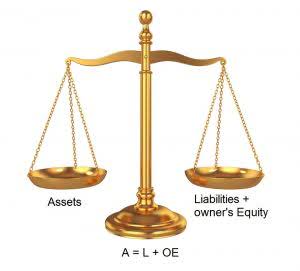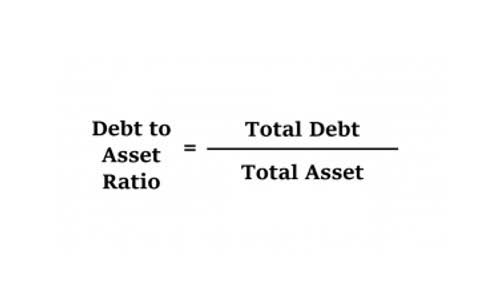
You will find that the revenue and profit of this transaction are recognized in the previous years, while the loss that arises will affect the current year’s income statement. This usually occurs in an accounting period following the one in which sales related to it were reported. direct write off method definition When sales are made on credit, customers often fail to pay back the money they owe to the company for various reasons. The direct write-off method can be a useful option for small businesses infrequently dealing with bad debt or if the uncollectibles are for a small amount.
You are considering switching to the balance sheet aging of receivables method. This would split accounts receivable into three past- due categories and assign a percentage to each group. In the same time period as the invoice was raised, the allowance approach accounts for the bad debt of an unpaid invoice. When a corporation utilises the allowance technique, it must examine its accounts receivable or unpaid bills and estimate the amount that might become bad debts in the future. It’s credited to a counter account called an allowance for questionable accounts.
TAX RETURN SERVICES
It is primarily used in its most literal sense by businesses seeking to account for unpaid loan obligations, unpaid receivables, or losses on stored inventory. Generally, it can also be referred to broadly as something that helps to lower an annual tax https://www.bookstime.com/ bill. To illustrate, let’s continue to use Billie’s Watercraft Warehouse (BWW) as the example. BWW estimates that 5% of its overall credit sales will result in bad debt. The direct write-off method is used only when we decide a customer will not pay.
An expense write-off will usually increase expenses on an income statement which leads to a lower profit and lower taxable income. The Direct Write Off Method provides accurate reporting of the business’s financial situation, including uncollectible debts and bad debts. Uncollectible debts can be recorded using the Direct Write Off Method, which is a clear and easy process. This technique entails writing off a bad debt as soon as a company thinks it is impossible to collect. As a direct expense on the income statement, Direct Write Off lowers the firm’s profits for the period in which it occurs. Bad Debt Expense increases (debit), and Allowance for Doubtful Accounts increases (credit) for $48,727.50 ($324,850 × 15%).
Pros & Cons of Direct Write-Off Method
In a write-down, an asset’s value may be impaired, but it is not totally eliminated from one’s accounting books. The direct write-off method does not allow a business to make any changes or adjustments to its write-off decisions. This means that once a bad debt is written off, it cannot be recovered. If you’re using the wrong credit or debit card, it could be costing you serious money. Our experts love this top pick, which features a 0% intro APR for 15 months, an insane cash back rate of up to 5%, and all somehow for no annual fee.
As a result, the direct write-off method violates the generally accepted accounting principles (GAAP). To keep the business’s books accurate, the direct write-off method debits a bad debt account for the uncollectible amount and credits that same amount to accounts receivable. It’s important to note that unpaid invoices are a part of the accounts receivable balance. An unpaid invoice is considered an asset and shall be debited in the bookkeeping. Generally Accepted Accounting Principles (GAAP) detail the accounting entries required for a write-off. The entries used will usually vary depending on each individual scenario.
Why is Direct Write-Off Method Not Used In the Accounting Profession?
As of January 1, 2018, GAAP requires a change in how health-care entities record bad debt expense. Before this change, these entities would record revenues for billed services, even if they did not expect to collect any payment from the patient. At the end of an accounting period, the Allowance for Doubtful Accounts reduces the Accounts Receivable to produce Net Accounts Receivable. Note that allowance for doubtful accounts reduces the overall accounts receivable account, not a specific accounts receivable assigned to a customer. Because it is an estimation, it means the exact account that is (or will become) uncollectible is not yet known. This journal entry eliminates the $500 balance in accounts receivable while creating an account for bad debt.

After determining a debt to be uncollectible, businesses can use the direct write-off method to ensure records are accurate. Bad debts in business commonly come from credit sales to customers or products sold and services performed that have yet to be paid for. Bad Debt Expense increases (debit), and Allowance for Doubtful Accounts increases (credit) for $22,911.50 ($458,230 × 5%).
Direct Write-Off vs. Allowance Method
The direct write-off method waits until an amount is determined to be uncollectible before identifying it in the books as bad debt. Reporting revenue and expenses in different periods can make it difficult to pair sales and expenses and assets and net income can be overstated. The direct write-off method is a way for businesses to record bad debt. When using this accounting method, a business will wait until a debt is deemed unable to be collected before identifying the transaction in the books as bad debt. Corporations and small businesses have a broad range of expenses that comprehensively reduce the profits required to be taxed.

This approach matches revenues with expenses, and so is considered the more acceptable accounting method. But, the direct write off method does not always consider the bad debt in the exact same accounting period. It is expensed only at the time when the business decides that the specific invoice will not be paid and classifies it as uncollectible. This decision may be made at any time and is more often well out of the accounting period of the invoice. Generally accepted accounting principles (GAAP) detail the accounting entries required for a write-off.
The final point relates to companies with very little exposure to the possibility of bad debts, typically, entities that rarely offer credit to its customers. Assuming that credit is not a significant component of its sales, these sellers can also use the direct write-off method. The companies that qualify for this exemption, however, are typically small and not major participants in the credit market. Thus, virtually all of the remaining bad debt expense material discussed here will be based on an allowance method that uses accrual accounting, the matching principle, and the revenue recognition rules under GAAP. However, the direct write-off method must be used for U.S. income tax reporting.
- Rather than writing off bad debt as unpaid invoices come in, the amount is tallied up only at the end of the accounting year.
- The direct write off method of accounting for bad debts allows businesses to reconcile these amounts in financial statements.
- Instead, it relies on reports of accounts receivable the company has determined will not be collected.
- If you are a business owner who requires regular insights about recording accounts, Akounto contributes to corporate citizenship by helping maintain accurate books of accounts.
- If an old debt is paid, the journal entry can simply be reversed and the payment posted to the customer’s account.
- It also guarantees that the loss recorded is based on actual statistics rather than estimates.
The direct write off method is also known as the direct charge-off method. These kinds of customers are normally put on the blacklist in the business world, and entities should not continue doing business with them. Below are some ways the direct write-off method and allowance method differ from one another. The difference between a write-off and a write-down is a matter of degree. Where a write-down is a partial reduction of an asset’s book value, a write-off indicates that an asset is no longer expected to produce any income.
The direct write-off method lets you charge bad debts directly to an expense such as the Allowance for Bad Debt account used in the journal entries above. By far the easiest write-off method, the direct write-off method should only be used for occasional bad debt write-offs. If Wayne allows this entry to remain on his books, his accounts receivable balance will be overstated by $500, since Wayne knows that it’s not collectible. One method, the direct write-off method, should only be used occasionally, while the allowance method requires you estimate bad debt you expect before it even occurs. After analysing all of these factors, it is decided that just recording a transaction is not a condition of an accounting transaction.
The Lego-Like Way To Get CO2 Out of the Atmosphere – Slashdot
The Lego-Like Way To Get CO2 Out of the Atmosphere.
Posted: Tue, 14 Nov 2023 02:30:00 GMT [source]
